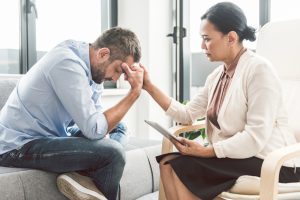I. Introduction
The complex interplay between trauma, resiliency, and post-traumatic growth serves as a profound area of study, offering insights into the human experience following distressing events. Trauma, often defined as a deeply distressing or disturbing experience, can have a far-reaching impact on individuals, challenging their psychological resilience and emotional fortitude. However, not all who endure trauma succumb to its debilitating effects; instead, many exhibit a remarkable capacity for recovery and transformation. This phenomenon, known as post-traumatic growth, encapsulates the notion that individuals can emerge from traumatic experiences with newfound strengths, perspectives, and appreciation for life. Understanding this relationship is vital, as it highlights the adaptive potential inherent in human beings, fostering a sense of hope and possibility even amidst suffering. Thus, this essay will explore these interconnected themes, seeking to illuminate how trauma can serve as a catalyst for personal growth and resilience (Richard G Tedeschi et al., 2025-07-23).
Please also review AIHCP’s healthcare certifications
A. Definition of trauma and its prevalence in society
Trauma, fundamentally understood as an emotional response to distressing events, manifests in numerous ways, affecting individuals mentally, physically, and socially. It encompasses a wide range of experiences, from personal losses and accidents to exposure to violence and natural disasters, resulting in significant psychological repercussions such as anxiety, depression, and post-traumatic stress disorder (PTSD) . Prevalence rates indicate that a substantial portion of the population encounters some form of trauma during their lifetime; studies suggest that nearly 70% of adults in the United States have experienced at least one traumatic event, with many grappling with the long-term effects (Bhugra D, 2021-02-04). This widespread incidence underscores the urgency to address trauma within various societal contexts, including healthcare, education, and community support systems, as its impacts extend beyond the individual, influencing familial relations and community dynamics. Understanding trauma’s definition and prevalence is vital for fostering resilience and facilitating pathways to healing.
B. Overview of resiliency and its importance in coping with trauma
Resiliency plays a crucial role in the process of coping with trauma, as it encompasses an individual’s ability to adapt and thrive despite adverse experiences. This psychological strength allows individuals to employ effective coping strategies, which can lead to post-traumatic growth (PTG). For instance, research focusing on survivors of the 2004 Indian Ocean tsunami reveals that those who utilized problem-focused coping were significantly more likely to experience PTG, highlighting the importance of adaptive strategies in long-term recovery (Hidayati SHS et al., 2025). Similarly, studies on veterans demonstrate that resilience and effective stress coping styles aid in their adaptation after combat experiences, allowing for personal growth and improved psychosocial well-being (T Kudrina et al., 2024). Therefore, fostering resiliency not only enhances coping mechanisms but also serves as a foundational element for individuals to find meaning and strength in their lives following trauma, ultimately facilitating their journey toward recovery.
C. Introduction to the concept of post-traumatic growth
The concept of post-traumatic growth (PTG) emerges from the recognition that individuals often derive positive transformations in the aftermath of trauma. This idea challenges the traditional view that trauma merely leads to psychological distress, emphasizing instead the potential for adaptive changes. Research indicates that those exposed to significant trauma, such as first responders during critical incidents, may exhibit varying profiles of post-trauma responses, including PTG alongside post-traumatic stress symptoms (Brickman S et al., 2023). Furthermore, qualitative studies among populations like female military veterans reveal that the meaning-making process following traumatic experiences can foster resilience and personal growth (A’mie M Preston et al., 2022). These findings underscore the complexity of trauma recovery, suggesting that while pain and suffering are prevalent, they can coexist with significant personal development. Understanding PTG not only enriches our comprehension of traumas effects but also highlights the importance of supporting adaptive coping strategies in therapeutic contexts.
II. Understanding Trauma
Trauma, an intricate and multifaceted phenomenon, profoundly affects individuals, often altering their psychological and emotional landscapes. It can stem from various sources, including personal loss, violence, or natural disasters, and its impact is not merely a fleeting experience but can lead to lasting effects on ones mental health and overall functioning. Understanding trauma involves recognizing both the immediate and ripple effects it can have on an individual’s life, as well as their relationships and sense of self. Importantly, the concept of trauma does not only encompass adverse experiences but also integrates individual responses to these experiences, which can lead to diverse manifestations of distress or resilience. Furthermore, examining the neurological and psychological mechanisms behind trauma helps illuminate pathways for healing and recovery, suggesting that recognizing ones trauma is the first step toward fostering resilience and facilitating post-traumatic growth (Ritblatt SN et al., 2022-09-28).
A. Types of trauma: acute, chronic, and complex trauma
Understanding trauma necessitates a distinction between its various types: acute, chronic, and complex trauma, each possessing unique characteristics and implications for recovery. Acute trauma typically results from a singular distressing event, such as a natural disaster or personal assault, leading to immediate psychological impacts often seen in symptoms of post-traumatic stress disorder (PTSD). In contrast, chronic trauma entails prolonged exposure to stressors, such as domestic violence or long-term illness, resulting in more deeply ingrained psychological issues and affecting an individual’s capacity for resilience. Complex trauma, characterized by exposure to multiple traumatic events, often in the context of interpersonal relationships, complicates recovery further by fostering feelings of helplessness and mistrust. Research highlights that addressing the specificities of each trauma type can improve therapeutic strategies, particularly for those recovering from complex conditions where acute episodes may emerge as complications, reflecting the critical need for tailored interventions in the aftermath of trauma (O Adegboye et al., 2025), (Litvinchik А. et al., 2025).
B. Psychological and physiological effects of trauma on individuals
Trauma exerts profound psychological and physiological effects on individuals, significantly shaping their resilience and potential for post-traumatic growth. Psychological responses to trauma often include anxiety, depression, and post-traumatic stress disorder (PTSD), which can hinder emotional stability and interpersonal relationships. Research indicates that individuals with a history of childhood trauma exhibit heightened trauma symptomatology, impacting their capacity to cope with subsequent stressors and increasing the risk of revictimization in adulthood (Brooks et al., 2015). Physiologically, trauma can precipitate changes within the brain and body, including alterations in stress response systems that may lead to chronic health issues. Furthermore, integrating arts and creative therapies has emerged as a promising avenue in addressing the health challenges faced by trauma survivors, thereby fostering healing and enhancing overall well-being (N/A, 2013). Understanding these intricate interactions is essential for developing effective interventions aimed at promoting resiliency and facilitating recovery.
C. The role of social and environmental factors in trauma experiences
Understanding the role of social and environmental factors in trauma experiences is crucial for comprehending the pathways to resiliency and post-traumatic growth. Social support significantly influences an individual’s ability to cope with trauma, as evidenced during the COVID-19 pandemic, where coworker support emerged as the strongest predictor of post-traumatic growth among nurses facing unprecedented challenges (Seo J et al., 2025). This highlights the importance of social networks in facilitating recovery and adaptation. Additionally, environmental factors such as job conditions and resource availability contribute to the potential for growth following traumatic experiences, underscoring the need for supportive organizational structures. Moreover, for emerging adults with a history of childhood trauma, external resources like professional services and social networks serve as protective factors that enable resilience and adaptation (Bahardeen FA et al., 2025). Collectively, these elements illuminate the complex interplay of social and environmental influences that shape trauma experiences and promote recovery pathways.
III. The Concept of Resiliency
Resiliency plays a critical role in how individuals cope with trauma, serving as a fundamental psychological resource that fosters adaptation and recovery following adverse experiences. It is important to distinguish resiliency from concepts such as post-traumatic growth (PTG), which refers to the positive changes emerging from crises. While PTG signifies a transformative process that can lead to enhanced personal development, resiliency encompasses a broader set of skills and traits that can be cultivated in response to any form of adversity, not just traumatic events (Yu.S Kotovska, 2023). In contexts fraught with instability, such as the ongoing conflict in Ukraine, fostering resiliency becomes essential for youth who are particularly vulnerable to emotional disturbances and anxiety (Syniakova V et al., 2025). Thus, interventions aimed at enhancing resiliency, such as emotional regulation and coping strategies, become vital components in the overall framework for psychological support and post-traumatic recovery.
A. Definition and characteristics of resiliency
Resiliency, defined as the capacity to adapt and recover from adversity, plays a crucial role in the process of post-traumatic growth. This characteristic is not merely about enduring but involves actively engaging with and transforming one’s experiences into opportunities for personal development. Individuals demonstrating resiliency often employ adaptive coping strategies, which can include acceptance and planning, as evidenced in studies where effective coping mechanisms mediated the relationship between resiliency and post-traumatic growth (Ogi Nńska-Bulik et al., 2015). Furthermore, resiliency embodies the ability to reframe traumatic experiences, allowing individuals to reconstruct their value systems and gain insight into their lives, as highlighted by recent findings in Positive Psychology (Poseck BV et al., 2006). By understanding the characteristics of resiliency, such as emotional regulation and social support, we gain valuable insight into how individuals not only survive but thrive following trauma, ultimately facilitating a path to growth and enhanced well-being.
B. Factors that contribute to individual resiliency
Resilience, that key ingredient for coping with trauma and even growing from it, comes from all sorts of places, like having people who support you, the way you think, and getting help from specific programs. Take online social support, for example. It really stepped up during tough times like the COVID-19 pandemic. Connecting with others and sharing what you’re going through can seriously boost your emotional resilience. Studies show it can make you more grateful and help you see things in a new light, which can lead to post-traumatic growth (Hao X et al., 2025). Then there are programs like the Maeum Program in South Korea. It’s a stabilization-centered intervention that has been shown to help people deal with psychiatric symptoms and actually grow after trauma. These types of programs usually focus on teaching people about what they’re going through and giving them coping strategies. This reinforces those resilience factors that are so important for recovering and adapting after something traumatic (Oh IM et al., 2025).
C. The impact of social support systems on resiliency
It’s hard to overstate how important social support systems are when it comes to helping people bounce back from trauma. Think of social support as a safety net – it boosts a person’s ability to handle stress and tough times. When people have strong bonds with family, friends, and their community, that really helps them stay emotionally stable, which is super important for resilience. Research has shown that people who have solid social networks tend to report fewer trauma symptoms and are generally doing better overall in their lives. This highlights just how crucial those community connections are for healing. On top of this, certain systemic issues – we’re talking about things like implicit racism and stigma – hit marginalized groups especially hard. This makes it clear that we need support systems designed to address those specific issues (Rich J, 2016). When we really get how different trauma experiences can be, and how they affect people in different ways, we can see that having comprehensive social support systems is essential for helping people grow after trauma and supporting them as they work toward recovery (Brooks et al., 2015).
IV. Post-Traumatic Growth
Post-traumatic growth, or PTG, shows how people can actually grow after really tough times. It’s not just about bouncing back to normal like resilience; PTG means that bad experiences can actually make you see things differently, feel stronger, and have better relationships. Studies show that after trauma, people might find a new love for life, feel more for others, and rethink what’s important to them (Shakespeare-Finch J et al., 2024-02-27). These changes often happen because of big questions and struggles that come up when you’re healing, pushing you to really think about what you believe in. Because of all this, PTG highlights a hopeful part of being human. It shows that we don’t just sit back and take trauma—we can actively rebuild who we are and make our lives better even after we’ve suffered.
A. Definition and key components of post-traumatic growth
Generally speaking, post-traumatic growth, or PTG, considers positive psychological shifts that may follow difficult life events, especially trauma. This idea has become noteworthy because it emphasizes that individuals, in most cases, may come away from such experiences with a greater sense of personal strength, deeper connections with others, and a changed perspective on what they value in life. Key elements of PTG involve changes in how one views themself, a heightened feeling of purpose, and the formation of new priorities and values. Furthermore, PTG emphasizes the significance of how individuals perceive their growth, rather than relying just on what can be observed outwardly (Keidar M, 2013). The resilience shown while dealing with trauma highlights that, even though such events are exceptionally difficult, they also provide chances for deep personal change and revitalization, as studied within Positive Psychology (Poseck BV et al., 2006).
B. Stages of post-traumatic growth and personal transformation
Generally speaking, post-traumatic growth illustrates a pretty significant transformation that people might go through after experiencing trauma. It’s marked by several stages that help with healing and personal development. At first, someone might feel shock and confusion, which leads them to rethink what’s important and how they see life. As they work through their emotional stuff, they often find they’re more resilient, so they can adapt and take on new chances to grow. For example, studies have shown that renal transplant recipients often report positive changes in their mental state after surgery, seeing optimism and personal growth as key results of their experience (Kamran F et al., 2016). Moreover, research suggests people often rebuild their values after trauma, implying that even when things are tough, there’s room for positive changes in life. Ultimately, these stages of post-traumatic growth emphasize the human capacity to become stronger and more resilient when facing life’s challenges (Poseck BV et al., 2006).
C. Case studies illustrating post-traumatic growth in individuals
Considering specific instances of people who have gone through traumatic events gives insight into the nuanced connection between hardship and development after the trauma, which shows a route of strength and change. A good example of this is the psychological changes seen in those who lived through the Iran-Iraq war. (Hashemi M et al., 2025). Their enduring early trauma could nurture better emotional strength and coping tactics. Even when trauma’s effects remain, their stories show how people can build resilience and improve their cognitive abilities. Similarly, young adults from Klang Valley, Malaysia, said that social support and creative activities were essential in their growth because they assisted them in overcoming challenges brought on by past traumas (Bahardeen FA et al., 2025). These particular cases emphasize that even though trauma frequently results in tremendous pain, it can also spark significant personal growth, which reinforces the idea that strong coping mechanisms can emerge from even the worst situations.
V. Conclusion
To sum up, the ways that trauma, resilience, and post-traumatic growth interact really shows how complicated it is for people to react to upsetting situations. Like recent research shows, including looking at how palliative care nurses use self-reflexive blog writing, people can still grow and become more resilient even when dealing with big problems, like those that came up during the COVID-19 pandemic (N Lalani et al., 2025). Also, what mental health workers went through during the Israel-Hamas conflict points out how trauma has two sides: personal resilience can help protect against feeling anxious and stressed, but it can also lead to post-traumatic growth (Dahan S et al., 2024). This complicated relationship suggests that trauma, while obviously upsetting, can also kick-start big personal changes if people have the right ways to cope and good social support. For that reason, it’s very important for people and professionals to understand these things when working on trauma recovery, which opens the door for ways to use resilience to help people heal and grow.
A. Summary of the relationship between trauma, resiliency, and growth
Navigating tough times involves a complex dance between trauma, resilience, and personal growth. Sure, trauma can hit hard, but research suggests resilience often softens the blow, influencing how much growth we see afterward. For instance, (Her T et al., 2025) points out that resilience and, interestingly, thinking things over intentionally can really help in reflecting and processing emotions post-trauma. Empathy and a belief in one’s own abilities also play a role. Studies on nursing students, for example, show that these traits can lessen the negative impacts of trauma and encourage positive results ((Doaa L Shahin et al., 2025)). So, boosting resilience and empathy in education and therapy is key. It’s not just about bouncing back; it’s about growing and changing for the better because of what we’ve been through. Adversity, then, holds surprising potential for transformation.
B. Implications for mental health practices and interventions
For those in the mental health field, it’s incredibly important to really grasp how trauma, resilience, and even growth after trauma can affect how we treat and help people. Recognizing the important part that spirituality can play – as a resource – is vital for helping people build resilience and heal after tough times. When people use their faith to cope, it seems they often function better and even find ways to grow from the experience, like seeing loss and suffering in a new light (Dr. Bajpai P, 2025). Moreover, schools can be key in supporting the mental well-being of teenagers. A caring and understanding environment helps them bounce back from difficulties and maybe even grow stronger (Khoirunnisa M et al., 2025). So, using trauma-informed approaches, focusing on spirituality, and encouraging supportive settings can greatly improve our methods of intervention. Ultimately, this can lead to better results for people dealing with the many layers of trauma.
C. Final thoughts on fostering resilience and promoting growth after trauma
To summarize, when thinking about trauma, promoting resilience and personal development isn’t just important for individuals—it can really help whole communities. Interventions that work best focus on improving mental resources. Things like resilience, belief in yourself, and good memories are key; research shows they help people grow after hard times (Ime Y et al., 2025). A complete view suggests older models need updating. It is important to think about values. People will need to reconstruct their personal priorities and beliefs after trauma (Y Nazar, 2024). Acknowledging the psychological and value-based elements, practitioners can then design specific therapies to help survivors heal. Personal strengths mixed with social factors greatly affect how each person recovers. Resilience is key, and it is a communal asset in overcoming life’s difficulties.
Additional Resources
Sutton, J, (2019). “What Is Post-Traumatic Growth? (+ PTG Inventory & Scale)”. Positive Psychology. Access here
Collier, L. (2016). “Growth after trauma”. APA. Access here
Gills, K. (2024). “What Makes Us Resilient After Trauma?”. Psychology Today. Access here
“6 Essential Lessons from a Survivor: Building Resilience After Trauma”. Mind Resilient. Access here

























